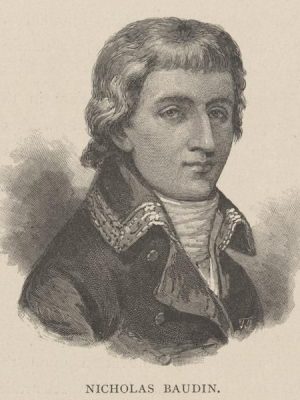1801, 1803 Nicolas Baudin
Thomas Nicolas Baudin was born in 1754 and joined the French Navy in 1774. Under orders from Napoleon Bonaparte he led a voyage of discovery between 1801 and 1803 that contributed significantly to knowledge of Shark Bay and much of Australia.
In 1801 Baudin’s corvettes, Le Géographe and Le Naturaliste, spent 70 days in Shark Bay with the ships’ companies exploring, mapping and naming many features. They named Bernier Island for the expedition’s astronomer, Bellefin Prong for Le Naturaliste’s surgeon and Heirisson Prong for Le Naturaliste’s sub-lieutenant. The navigator-surveyor Louis de Freycinet named Henri Freycinet Harbour for his brother and Cape Lesueur for Le Géographe’s artist. The expedition’s naturalist, François Péron, explored the peninsula that now bears his name.
During a trip to Dirk Hartog Island the commander of Le Naturaliste, Emmanuel Hamelin, discovered the plate left by Willem de Vlamingh in 1697. Believing it sacrilegious to remove the plate, Hamelin instead nailed a lead plate recording his own visit to another post on the northeast side of the island. Hamelin’s post and plate have never been found.
After surveying Tasmania and Australia’s entire southern coast the expedition returned to Shark Bay in March 1803. Landing parties from Le Géographe made excursions to different parts of Peron Peninsula, which Péron crossed from east to west making notes on fauna, flora and the Aboriginal people. These were the first written descriptions of the Malgana people to be presented to the outside world.
Baudin died of tuberculosis in Ile de France (Mauritius) in 1803.

